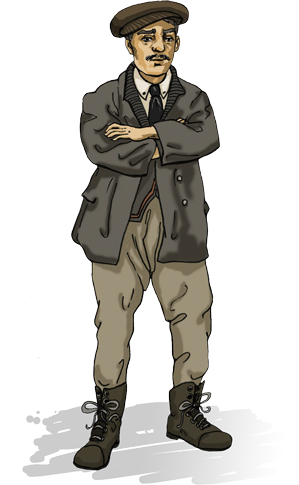-
Find youritinerary
-
Book your stay
-
Buy yourski & pedestrian pass

Book your stay



Monday 23 December updated on 12-23-2024 at 8:06
Monday 23 December updated on 12-23-2024 at 8:06
Sign up for our newsletter so you don’t miss anything in les Arcs !
The prices and visiting days are available on My week at Les Arcs or at the Tourist Offices.
The Quartier des Alpins in Bourg-Saint-Maurice hosted the Diables Bleus of the 7th Battalion of Alpine Hunters (BCA) until 2012. This memorial site offers an opportunity to discover the Haute Tarentaise valley and the defensive structures built to protect and control communication routes to Italy. It provides a chance to explore the local military history, including its organization, the construction of fortifications, the battles, and the men who gave their lives for our freedom and peace.

«My name is Francesco Séconi. I was born in Vicenza, and crossed the Alps in 1889 to find work in France. Near Bourg Saint Maurice the forts were under construction and I was quickly hired. As I took up my job I was delighted to meet many of my compatriots from different regions of Italy. The work was tiring, endless days in all weathers, and thousands of tons of metal and concrete were used. When the work was finished I stayed in France, settled here and started a family.»
The construction and architecture of forts adapted to the constant evolution of artillery.
Key dates of these technological breakthroughs:
1858: The invention of the rifled cannon increased power, precision, and doubled the weight of projectiles.
1873: The adoption of breech-loading allowed the modernization of old bronze cannons, such as the 138 Reffye, which was present in most forts.
1877: Adoption of the new steel cannon, the 155 de Bange, with a range of 9 km.
1878: Adoption of the new steel cannon, the 120 de Bange, with a range of 8 km.
1885: Adoption of a new explosive, "melinite," used in torpedo shells. Ten times more powerful than gunpowder, it required the reinforcement of some fortifications with special concrete.
1897: Adoption of the quick-firing 75mm cannon. Its revolutionary hydro-pneumatic recoil system entirely absorbed the recoil of the piece.
In 1913, the batteries of Courbaton and des Têtes were built.
In 1937, in response to the rise of fascism and Nazism, two strategic roads were constructed for the supply of men, food, and ammunition: one starting from Peisey-Nancroix and the other from Hauteville-Gondon. They were built by former fighters from the Spanish Civil War. The name "Route des Espagnols" still exists today for the one in Peisey-Nancroix.

It was the main means of communication from 1874 to 1914 and was still being used after the arrival of the telephone during the Second World War. Messages were transmitted using Morse code (invented in 1832). Light pulses were produced using a lamp with a shutter. A telescope was used at the receiving end.